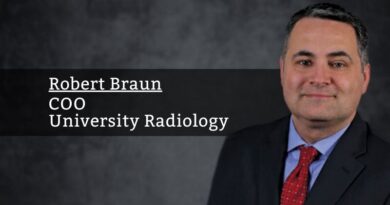Overworked and overwhelmed: Using Technology to Get the Help You Need in a Time When There is No Time
By Denise Aguilar R.T. (R)(ARRT), B.S. Health Science, Health Science/ Practicum Instructor, San Antonio ISD
In March 2020, our nation was hit with a pandemic that caused national and global chaos. There were a lot of unknowns about COVID-19 at the time, and one thing we were not prepared for was the strain on the healthcare systems. The medical professionals on the frontline were working with a limited number of resources while their comrades were falling to the virus itself. This left many healthcare facilities severely short-staffed. It was assumed that working conditions and staffing shortages would improve once the pandemic subsided. This has not been the case so far in most hospital systems in the country.
Since the beginning of this devastating turn of events in our world, there have been endless accounts of the staffing shortage in the field portrayed in the news and on social media. The stories of nurses and other allied healthcare professionals having to work extra shifts and care for a larger number of patients than what is considered a safe amount have been alarming. As a result, the reports of burnout and mental health decline have come to light more urgently. What is not mentioned is the strain on many professionals that staff the imaging departments all over the country. These are the technologists in diagnostic X-ray, CT, MRI, ultrasound, nuclear medicine, and all other modalities that are the eyes of healthcare. Most of the time, radiology technologists are not limited to a set number of patients, they provide services for all areas of the hospitals to all patients in need.
Employers need to find innovative ways to alleviate the stress and strain on the job while offering different avenues of social support.
There is still a struggle to find the workforce to operate the state-of-the-art imaging equipment that hospitals have spent millions of dollars on to streamline patient care and alleviate constraints for imaging professionals. As a technologist in a busy radiology department, I can attest to the imaging staff shortage that has contributed to technologist burnout. The staff members that have stayed and remained loyal to their employers are being asked to cover gaps in schedules that would include working evenings, overnights, and weekend shifts. They are doing this as patient loads have increased, operating schedules have been overloaded, and approval for time off has decreased. Some of my colleagues have expressed frustration over the lack of breaks which has increased anxiety. Others have coped with traumatic working environments by crying on their commutes home. And those are just some examples of what I have gathered in my work environment. This leads to many imaging professionals leaving larger healthcare systems or leaving the profession altogether. They are exhausted, experiencing higher stress levels, less sleep, and less time to spend with their families or address their mental health.
When an imaging technologist expresses concern over their mental health, what can they do?
With so many technologists working longer hours and picking up more shifts, it is understandable that they lack time to set up an in-person appointment with a mental health practitioner. Many licensed counselors are only available during normal business hours. And if we are being honest, most shift workers do not want to spend their free time sitting in a waiting room. Many employers offer an employee assistance program (EAP) in which counseling services are provided at no charge for the first few sessions. However, the resources are limited due to the increased need for mental health services.
That is where the latest technology for mental healthcare comes into play. Several technologists that I have spoken to have expressed an interest in using telehealth as a source to access therapy services. Considering that radiology technologist utilizes sophisticated technology daily, telehealth would be a tool they can use and navigate easily. According to some local mental health experts, face-to-face therapy is still an effective and preferred form of therapy as it allows the client and therapist to build a strong therapeutic relationship. However, if that is not an option, any type of therapy would be helpful to technologists that need it now. According to a recent survey conducted by the American Psychological Association, 96% of psychologists that responded said that teletherapy was in fact therapeutically effective when used during the height of the pandemic. The majority agreed that telehealth should be a standard option going forward (Clay, 2022).
The radiology field is made up of a unique group of professionals who have a passion for patient care, technology, and a nerdy obsession with the inverse square law. The work is sometimes physically and emotionally challenging, but rewarding. The love for the profession is still there but waning. The unexpected stress and trauma from the pandemic have certainly taken its toll on the healthcare community and hurting all departments. But without the eyes of radiology, patient care can be negatively affected. That is why it is important to ensure that technologists have the ability, time, and resources to address any stress or anxiety they are experiencing due to shortages. Employers need to find innovative ways to alleviate the stress and strain on the job while offering different avenues of social support. In a field operated by technology, wouldn’t it make sense to use the same advancements as an avenue for better mental health? It’s time that we use the technology that we use to help others, to finally help our own.



